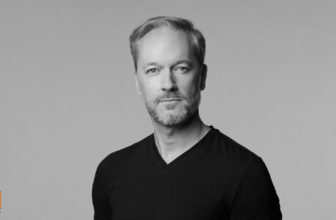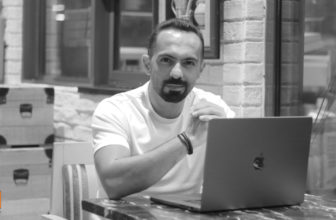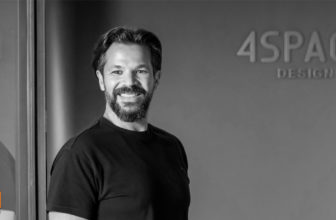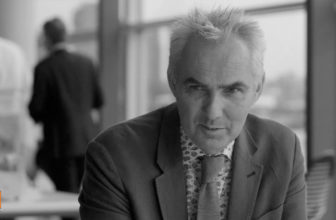Nader Tehrani, 53, was born in London. Because his father was a member of the Iranian diplomatic corps, Tehrani spent his childhood in various countries including Pakistan, South Africa, Iran, Italy and the United States. Tehrani received a B.F.A. and a B.Arch from the Rhode Island School of Design in 1985 and 1986, respectively. He continued his studies at the Architectural Association School of Architecture in London, where he attended the post-graduate program in history and theory. Upon his return to the United States, Tehrani received the M.A.U.D. from the Harvard University Graduate School of Design in 1991.
In 2011, Tehrani founded NADAAA, a practice dedicated to the advancement of design innovation, interdisciplinary collaboration and an intensive dialogue with construction practices. The firm has offices in Boston and New York City.NADAAA’s projects range in scale from furniture to architecture to urban design, with a focus on architectural craft, construction, and fabrication. NADAAA progresses professionally on two specific fronts: the dedication to advancing construction and green development. The integration of landscape and building is part of NADAAA’s foundational standards, binding it to their design process, and finding innovative ways in which to intertwine it into systems and plans. The firm is developing a portfolio of projects around the world that requires optimized project delivery, currently with projects in the US, Australia, Canada, Kuwait and France.
Tehrani also served as the head of MIT’s Department of Architecture from 2010 to 2014. In July 2015, he was appointed dean of the Irwin S. Chanin School of Architecture at The Cooper Union for the Advancement of Science and Art.
In August 2016, Ibrahim Abdelhady, the founder of Arch2O, had the chance to interview with Nader Tehrani, the front man of NADAAA and the dean of the Irwin S. Chanin School of Architecture.
What are the reasons that made you want to study architecture and pursue your career as an architect?
In part, I wanted to become an architect as a result of the many countries in which I grew up. Appreciating such diverse environments, spaces and witnessing the different characteristics and material technologies of each of these physical environments was the first way in which I engaged with these different cultures, even beyond their history and sometimes their language. In a way, the visuality of the physical environment became my entry into those cultures, so you can say it became my first language and that somehow transformed itself into more of a professional and intellectual fascination down the road.
In your own words can you tell us how you started and what were the projects that had a major impact on the Studio’s progress and development?
We started our office as a natural extension of what we were doing in school, as students. After my graduation, I became a research assistant, then a lecturer and subsequently an assistant professor …and so my trajectory was marked by a punctuated ascent into academic life. This helped to foster a kind of practice that was speculative and research-based from the early days, and that produced a few projects that were transformative in the early years.
One of them was an installation for the Museum of Modern Art in New York City curated by Terry Riley. That put us immediately on the international stage; the exhibition was called Fabrications, and we were researching new digital means and methods of fabrication at the time, something in its infancy in the 1990’s. Concurrent with that, we were undertaking some small projects –one in Alabama and one in Venezuela– researching materials in innovative ways. The other thing that put us on the map was the Progressive Architecture award series; we got PA awards for both of those projects and that was completely transformative for us in those early years.
But I think you are asking about NADAAA also… the 3 key projects that underline our presence in practice today emerged from the depth of the depression in 2007/2008. During that time we did 14 competitions and won three of them –the Hinman Building at Georgia Tech, the MSD at Melbourne University, and the DFALD Buildings at the University of Toronto– all of them schools of design with clients among the world’s foremost voices and intellectuals in the field. They each ended up becoming quite extraordinary buildings — just due to having to respond to such particular mandates. So these are, in my mind, some of the most key moments in the transition from the initial thinking we undertook as Office dA to the more mature projects at NADAAA.
What was your initial reaction and response to Boston Society of Architects’ post in relation to bringing 3D printing in-house? “If something is over budget or unrealistic, [designers are] thought of as artists without a grip on reality…In this case, because one is able to connect the dots between the process of imagining something and the process of delivering it, it changes the perception of the actual role of the architect.”
Well, this isn’t connected simply to 3D printing. This has to do with the evolution of the profession and the connection to construction in general. The fact that architects have reigned over design intent, but not the means and methods of construction, is what has divorced them from the reality of the construction site. I think once we reconstitute the governance over the construction site then it isn’t a question of whether the architect has a grip on reality, but rather it’s a question of whether the contractors are ripping off the clients, to be blunt. To all those architects who are taking on the question of construction with some level of seriousness, that will have a huge impact beyond 3D printing, including the way that we establish not only how architecture is designed but how it is built and conceived through construction innovations.
Do you have contemporaries or precedent individuals who you look to for inspiration in architecture?
I look at many architects and many things. I’m known to have documented this very well and I love the work of Plečnik in Ljubljana, Eladio Dieste of Uruguay and a range of Scandinavian architects. In the contemporary scene I have an active conversation with a variety of Spanish architects including Ensamble Studio. There is a range of characters but I think it even broader than that probably.
Today, the architectural market is saturated and it’s not easy to find a job. What advice would you give to fresh graduates, also what qualifications do you look for in students that aspire to join your team?
The advice we could have for fresh graduates is to make sure they understand their own agency; like no time before, they can actually undertake a project on their own without the traditional mentorship or tutorial process that they would undergo in another firm, so to some degree I think my advice to them would be: “Don’t prepare yourself for practice today, but rather help transform practice towards what it can become tomorrow”.
The qualifications they need to join our team has more to do with their attitude than technical skills because they basically have to be able to take on anything and be malleable and resilient in terms of the kinds of questions that I cast on them.
So maybe this question is for me, but as Dean of The Cooper Union, do you think the current architecture model of education could be able to fill the gap or fulfill the need of market?
I don’t think that Education is there to adjust to the market, per se. The role of education is to transform practice not service it as such. So in that sense, I think no matter what pedagogical transformations we undertake, they will not mirror how practice is being run today. Our aim is to change practice not to merely accommodate it.
Thank you so much Mr.Tehrani, I really appreciate your time.
.





